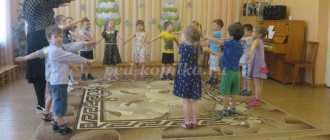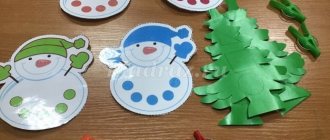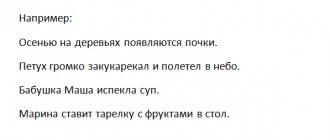Physical education quiz for preschoolers
A healthy lifestyle is important not only today, so a quiz on physical education will be useful. We think that the first step in working on the test is to start with these questions. The image of a school lesson is something that will set children in the right mood. Children can write the answer in words, or they can speak out loud by raising their hand and saying, “I know.” The purpose of the quiz is to teach children that sport occupies an important place in life and the world.
- Children's transport that does not have pedals is... (scooter)
- What is the name of the line when children line up with each other on the same line - this is... (line)
- What is success in competition called? (Victory)
- You have to pedal it to move. On what? (Bike)
- Summer skates are... (Rollers)
- The tourist carries this on his shoulders. What? (Backpack)
- What is the skier's path called? (Ski track)
- What do you call a break during a lesson for rest? (Physical education minute)
- Why do they douse themselves with cold water? (Hardening)
- Children often abbreviate the name of a physical education lesson this way. How? (PE)
- What should you take with you to school for physical education? (Replacement uniform)
- What's the right way to start the day? (Charger)
- What needs to be done to keep muscles elastic? (Stretch)
- If you pump up your abdominal muscles, you will see... (abs)
- What is the name of the limit that must be passed for credit? (Standard)
Traditions and symbols of the Olympics
Rings
The emblem of the Olympic Games is multi-colored rings intertwined with each other. Each of them means a continent:
- blue – Europe;
- black - Africa;
- red - America;
- yellow – Asia;
- green - Australia.
The fact that the rings are intertwined means the unity and friendship of the peoples of these countries.
Flag
The official competition flag is white, meaning a symbol of peace, with an emblem. At every Olympic Games it is used at the opening and closing of the Olympics. After that, it is transferred to the city where the next Olympic Games will be held.
Fire
The tradition of lighting a fire has been preserved from ancient times to this day. The ceremony begins in Olympia several months before the start of the Games. 11 girls in white dresses gather there, and one of them, with the help of a mirror and the sun's rays, lights a torch - a fire that will burn throughout the Olympics.
After this, the torch is passed to the best athlete, who will carry it through the Greek cities and to the country where the Games are being held. As a result, the torch is delivered to the place where the competition will be held.
A large bowl is installed in the stadium, and the fire in it is lit with a torch. It will burn until the end of the Olympics.
Opening and closing of the Games
The ceremony delights everyone. The production uses the latest scientific advances, innovations and a huge number of volunteers. Artists, famous athletes, etc. are also invited.
Sports in the ancient Olympics
In ancient times, the sports at the Olympics included running, wrestling, long jump, javelin and discus throwing, hand-to-hand combat, and chariot racing. Athletes who showed the best results were awarded a laurel wreath or an olive branch. The champions were also escorted to their hometown, and until their last days they were revered and considered respected people. Feasts were held in their honor, and sculptors made marble statues for them.
Alas, in 394 AD, the Roman Emperor Theodosius I banned the Olympic Games. He didn't like such competitions. Due to the adoption of Christianity, it was announced to them that any pagan religious rite must cease.






